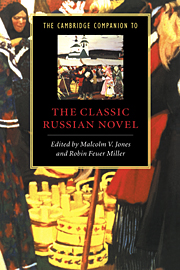2 - The city
from Part 1 - The setting
Published online by Cambridge University Press: 28 May 2006
Summary
Russia is unique among European states for having had two capitals during much of its modern life: St. Petersburg and Moscow. The first was founded in 1703 by Peter the Great, and became the administrative, political, and cultural capital. In these respects, it displaced Moscow, whose history went back at least four hundred years. But Russians continued to regard the older city as the spiritual center of the country; even the tsars, who presided in Petersburg, went to Moscow to be crowned; and the Bolsheviks reconfirmed its traditional importance by moving the government back there in 1924. Each city has come to represent very different and often conflicting values, as we shall see, and each has functioned as a pole around which the vexed question of Russia's character and destiny has revolved.
Since the early nineteenth century, St. Petersburg and Moscow have figured prominently in the Russian novel. But many of the issues that attach to them are far older. In Kievan Rus, the first East Slavic state, cities were not only centers of culture, but enclosures against domestic and foreign enemies. It is instructive, and perhaps psychologically significant, that in Slavic languages, the word for “city,” as in Russian gorod and Church Slavonic grad, has no etymological connection with the Latin civis and its derivations in English and the Romance languages, but instead goes back to the Indo-European root designating an enclosed place.
- Type
- Chapter
- Information
- The Cambridge Companion to the Classic Russian Novel , pp. 21 - 40Publisher: Cambridge University PressPrint publication year: 1998



